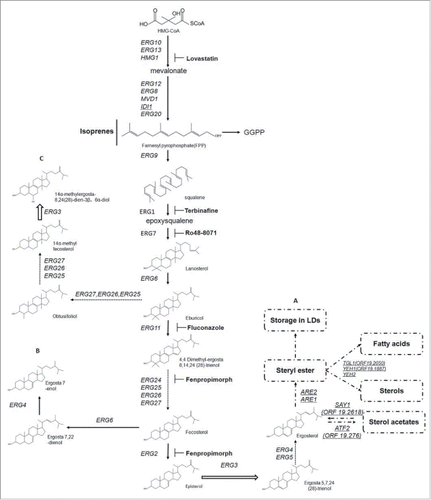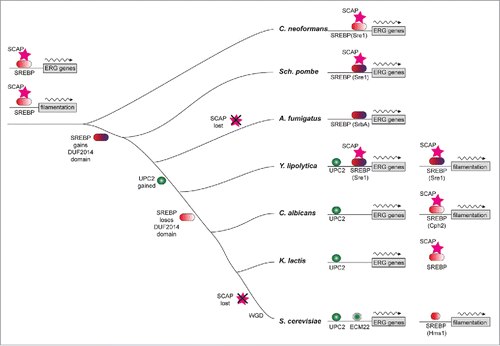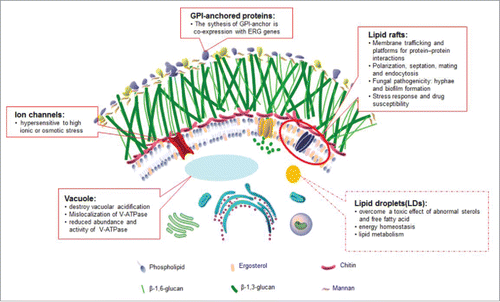Figures & data
Figure 1. The conserved pathway of sterol synthesis, storage and transformation in C. albicans and S. cerevisiae. A. Schematic representation of the common ergosterol synthesis process including the enzymes and intermediate products in C. albicans. The storage and transformation between steryl esters and fatty acids or sterols is uncharacterized in C. albicans and labeled with dotted boxes, based on the homologous genes and their roles in S. cerevisiae. B. Accumulated intermediates when ERG3 function is lost. C. Bypass pathway when C. albicans is treated with Erg11p inhibitors. The resulting aberrant sterol 14-methylergosta-8,24(28)-dien-3β,6α-diol is produced by ERG3. Solid arrows, single enzymatic process; dashed arrows, multiple enzymatic processes; underlined genes, S. cerevisiae genes and their homologous genes in C. albicans are shown in parentheses.

Table 1. Sensitivities of the mutant strains with the mutations or disruptions in ERG genes referred in this article.
Figure 2. Model of sterol regulon evolution in Saccharomycotina illustrated by Maguire et al. in Plos Genetics (50). The ERG genes and filamentation genes are both regulated by SREBP and SCAP in the fungal progenitor. Upc2p gains binding sites in the promoters of ERG genes and the DUF2014 domain of SREBP, which may be important for interaction with Scap and retention of SREBP in the membrane, is lost but the protein still plays a role in regulation of filamentation in C. albicans.

Figure 3. The effects of ergosterol are labeled on the C. albicans cell pattern diagram based on the picture from the Atlas of Fungal Infection.Citation63 The functions and cellular properties of ergosterol in C. albicans are described in solid boxes, while the functions verified in S. cerevisiae but yet uncharacterized in C. albicans are noted in dotted boxes. Candida albicans Mutations in the Ergosterol Biosynthetic Pathway and Resistance to Several Antifungal Agents.

